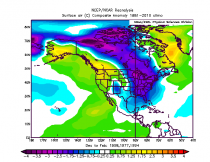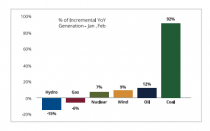Claim: ‘Largest climate march in history’ coming to NYC – People’s Climate March
Claim: ‘6 ways climate change is ruining summer for everyone’ – ‘It’s about to get really ugly out there, everyone’
http://www.salon.com/2014/07/13/6_ways_climate_change_is_ruining_summer_for_everyone/…
45 ridiculous things global warming will supposedly cause
WSJ: Confessions of a Computer Modeler: Any model, including those predicting climate doom, can be tweaked to yield a desired result
WSJ: Confessions of a Computer Modeler: Any model, including those predicting climate doom, can be tweaked to yield a desired result
http://hockeyschtick.blogspot.com/2014/07/wsj-confessions-of-computer-modeler-any.html
Confessions of a Computer Modeler
Any model, including those predicting climate doom, can be tweaked to yield a desired result. I should know.By Robert J. Caprara July 8, 2014 7:15 p.m. ET THE WALL STREET JOURNALThe climate debate is heating up again as business leaders, politicians and academics bombard us with the results of computer models that predict costly and dramatic changes in the years ahead. I can offer some insight into the use of computer models for public-policy debates, and a recommendation for the general public. After earning a master’s degree in environmental engineering in 1982, I spent most of the next 10 years building large-scale environmental computer models. My first job was as a consultant to the Environmental Protection Agency. I was hired to build a model to assess the impact of its Construction Grants Program, a nationwide effort in the 1970s and 1980s to upgrade sewer-treatment plants. The computer model was huge—it analyzed every river, sewer treatment plant and drinking-water intake (the places in rivers where municipalities draw their water) in the country. I’ll spare you the details, but the model showed huge gains from the program as water quality improved dramatically. By the late 1980s, however, any gains from upgrading sewer treatments would be offset by the additional pollution load coming from people who moved from on-site septic tanks to public sewers, which dump the waste into rivers. Basically the model said we had hit the point of diminishing returns.When I presented the results to the EPA official in charge, he said that I should go back and “sharpen my pencil.” I did. I reviewed assumptions, tweaked coefficients and recalibrated data. But when I reran everything the numbers didn’t change much. At our next meeting he told me to run the numbers again. After three iterations I finally blurted out, “What number are you looking for?” He didn’t miss a beat: He told me that he needed to show $2 billion of benefits to get the program renewed. I finally turned enough knobs to get the answer he wanted, and everyone was happy.Was the EPA official asking me to lie? I have to give him the benefit of the doubt and assume he believed in the value of continuing the program. (Congress ended the …
‘Medical quackery’: Meet the medical student who wants to bring down Dr. Oz
…Lack of tornadoes blamed on global warming: Scientists ‘are exploring the possibility that the effects of global warming might play a role’
http://www.climatecentral.org/news/tornado-peak-passes-quiet-season-17754…
The ‘War on Meat’ Will Make the ‘War on Coal’ Look Tame
http://reason.com/blog/2014/07/11/the-war-on-meat-will-make-the-war-on-coa…
Meteorologist Joe D’Aleo: ‘Polar Vortex summer version prelude to brutal winter’
By Joseph D’Aleo, CCM (Certified Consulting Meteorologist)
Last winter was a brutally cold one for the nation’s midsection. For Chicago, the period from December through March was the coldest in the entire record back to 1872. It was the third snowiest winter behind only the 1978/79 and 1977/78 winters. In Detroit, it ended up the snowiest ever on record back to 1880.
Weatherbell called for this winter even as NWS and many forecasters called for a warm winter.
It has been a cool spring and summer in the central. Now as we approach the peak of summer a very strong trough for summer and cold air mass for July
will be driving into the central and east.
The warm pool of water in the North Pacific and the warm tropical Pacific waters moving west to the central Pacific is a classic scenario for a cold winter in the central and eastern US. It also leads to a cooler, wetter summer as we forecast.
The combination of that warm pool, an El Nino Modoki (central Pacific biased), easterly QBO and other teleconnections suggest this next winter will be like last one but with the cold biased further east.
Last winter, residents of many parts of the north paid as much for electricity as in all of 2014. Some plants came within two days of running out of oil in New England. During the winter of 2014, coal was the only fuel with the ability to meet demand increases for electricity, providing 92 percent of incremental electricity in January/February, 2014 versus the same months in 2013.
With the projected closure of 60 gigawatts (GW) of coal plant capacity, virtually the entire U.S. is rapidly reaching the brink of significantly higher prices for electricity and being unable to meet either the summer or winter peak demand for power. Unless immediate steps are taken to halt coal plant closures. (PDF)
In a major cold outbreak, the grid may fail and large areas may be in the dark during extreme cold. This 1989 blackout from a failure of the Canadian grid may be a preview of our situation for which politicians will likely blame …

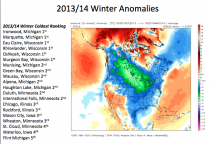
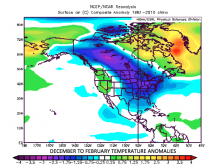
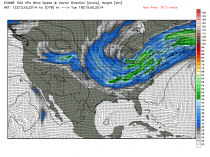
_thumb.png)
_thumb.png)
